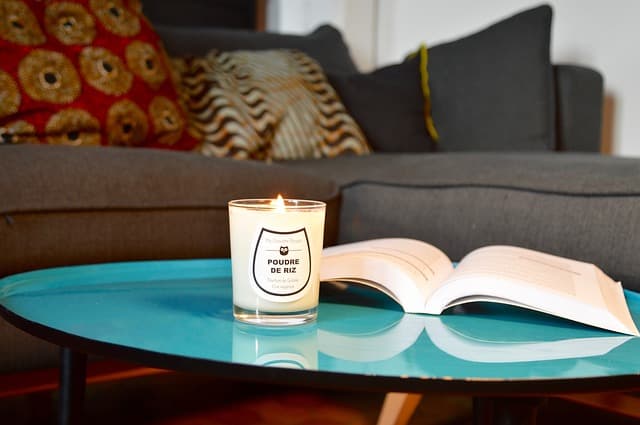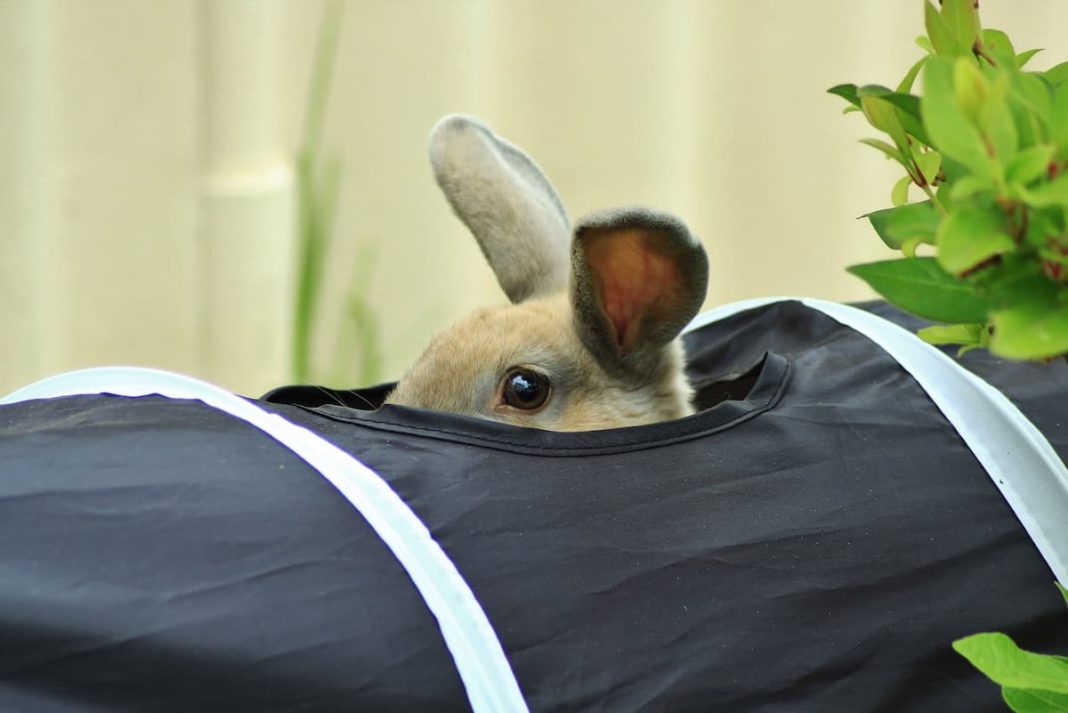Are Candles Bad For Bunnies?
Candles provide relaxation, illumination, and a peaceful ambience for so many people. It’s so common for households across the world to have decorative or aromatic candles to make their homes more enjoyable. The bad news is that bunnies and candles are generally not a good combination.
Candles are bad to use if you’ve got an indoor bunny as most candles release Volatile Organic Compounds (VOCs) into the air.
A rabbit’s lungs will work less efficiently when exposed to smoke, soot, chemicals, and other toxins. It can result in a rabbit struggling to breathe, sneezing frequently, and experiencing red, watery eyes.
If you decide to use candles in your home, scented or unscented, then it’s recommended to keep them at least one room away from your pet rabbit to protect their sensitive respiratory system.
Also, if you allow your rabbit out of its cage for exercise, make sure that there aren’t any lit candles within any of the rooms that they’re in to avoid creating a fire hazard.

Why Are Candles Dangerous For Indoor Bunnies?
The most significant risk that candles pose to rabbits is restricted breathing.
Just as any other animal would struggle with a foreign scent, a rabbit’s lungs will struggle to cope with smoke, soot, and chemicals released by candles.
The problem is that many candles release chemicals known as Volatile Organic Compounds (VOCs). The impact of these chemicals on rabbits has never been confirmed, but it’s highly likely to be toxic if inhaled constantly.
Smoke And Soot
Candles often release smoke into the atmosphere, which means that a burning candle exposes an indoor rabbit to carbon dioxide. It’s also important to note that candles create tiny soot particles while they burn, which can become airborne and inhaled.
Candles have the following types of wicks:
Strong Smells
Many people will use scented candles to relax.
The problem is that there’s no artificial aroma that will have this effect on a rabbit. A smell like lavender, for example, will cause a rabbit to become increasingly upset and perturbed.
Volatile Organic Compounds
Releasing any type of chemical into a closed atmosphere is potentially harmful to a rabbit.
Are There Any Candles That Are Safe For Rabbits?
Understanding what a candle is made of is fundamental to understanding how dangerous it could be to your rabbit. Before buying a candle, it’s important to consider the effects it could have on any pets within your home.
Candles are sold in various forms, made from a range of different materials, including:
Paraffin Wax
It’s a basic, unscented wax candle, made from paraffin wax.
Of all candle types, paraffin wax would be the most problematic as it’s more likely to release dangerous VOCs into the atmosphere. These candles should be avoided, especially if when used in a house along with an indoor rabbit.
The Human and Ecological Risk Assessment has stated that the purer the wax used to create a candle, the more VOCs are released. Therefore, the cheaper a candle is, the likelier it is to be crafted purely from paraffin wax.
While the chemicals released by candles are insufficient in quantity to immediately damage human health, prolonged exposure is risky. This suggests that rabbits are particularly vulnerable.
Soy Wax
Soy wax would be considered to be better than paraffin wax. Although it’s important to mention that many manufacturers of soy candles still include paraffin wax as a filler product.
While a soy candle will release fewer VOCs than a candle made from pure paraffin wax, it’ll still be present. The same also applies to soot and smoke – it’ll be less problematic than a pure paraffin wax candle.
Another downside of using a soy candle is that the flame can be inconsistent, resulting in the flame blowing itself out on occasion.
Palm Wax
Palm wax comes from the palm oil trees of South America and Asia, palm wax is a 100% natural product.
The good news is that it leads to a fast and clean burn and doesn’t release any VOCs, making it a useful option if you need to light candles around rabbits. It also produces less soot compared to other waxes.
Coconut Wax
Being extracted from coconuts Coconut wax is a comparatively recent addition to the realm of candles, and it’s as close to safe for indoor bunnies as candle wax gets.
Coconut wax burns bright and clear, and won’t release much soot or smoke, especially when paired with a cotton wick. Coconut wax is also typically unscented, beyond the mild aroma of coconut that you’d expect.
Beeswax
The good news from beeswax is that the candles won’t release VOCs into the air, therefore soot or smoke will be minimal, especially if you’re careful with positioning and wick trimming.
Beeswax is also used as a natural air purifier when used as a candle, as it releases negative ions into the atmosphere. As VOCs are positive ions, the presence of a beeswax candle will neutralize their presence.
Alternatives To Lighting Candles
If you want to make a room in your home look more homely, why not visit a hardware or home décor store to find battery-operated candles? These products will offer the same illumination and aesthetic as traditional candles, without the smoke or chemicals.
Another better alternative would be to use a lantern. Whether operated by batteries or hand-cranked, a lantern can be strategically placed around a home to offer a good light source.
It’s never recommended to use candles if you have an indoor bunny hopping around. If you do want to use a candle of some kind, then use soy wax candles or coconut wax candles as they release fewer VOCs.








